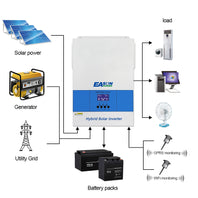As the world increasingly turns to renewable energy sources, understanding the components of solar energy systems becomes essential. One critical component is the solar charge controller. This device plays a vital role in managing the power generated by solar panels, ensuring that batteries are charged efficiently and safely.

What is a Solar Charge Controller?
A solar charge controller is an electronic device that regulates the voltage and current coming from solar panels to the batteries. It prevents overcharging and deep discharging, which can significantly shorten battery life. By controlling the charging process, the solar charge controller ensures that batteries receive the optimal amount of energy.
How Does a Solar Charge Controller Work?
The operation of a solar charge controller can be broken down into several key functions:
- Voltage Regulation: It maintains the voltage levels to prevent battery damage.
- Current Control: It adjusts the current flowing into the batteries based on their state of charge.
- Battery Protection: It disconnects the solar panels when the batteries are fully charged.
- Load Control: Some controllers can manage the power supplied to connected devices.
When sunlight hits the solar panels, they generate electricity. The solar charge controller monitors this electricity and directs it to the batteries. If the batteries are full, the controller will stop the flow of electricity to prevent overcharging. Conversely, when the battery charge drops, the controller allows current to flow back into the batteries.
Types of Solar Charge Controllers
There are primarily two types of solar charge controllers: PWM (Pulse Width Modulation) and MPPT (Maximum Power Point Tracking).
- PWM Controllers: These are simpler and less expensive. They work by gradually reducing the amount of power sent to the batteries as they approach full charge.
- MPPT Controllers: These are more advanced and can convert excess voltage into additional current, making them more efficient, especially in larger systems.
Why is a Solar Charge Controller Important?
Using a solar charge controller is crucial for several reasons:
- It extends the lifespan of batteries by preventing overcharging.
- It enhances the efficiency of the solar energy system.
- It provides safety by preventing battery damage and potential hazards.
In conclusion, understanding the function and importance of a solar charge controller is essential for anyone interested in solar energy systems. By effectively managing the charging process, these devices ensure that solar energy is utilized efficiently and safely. For more information on high-quality solar charge controllers, visit .








